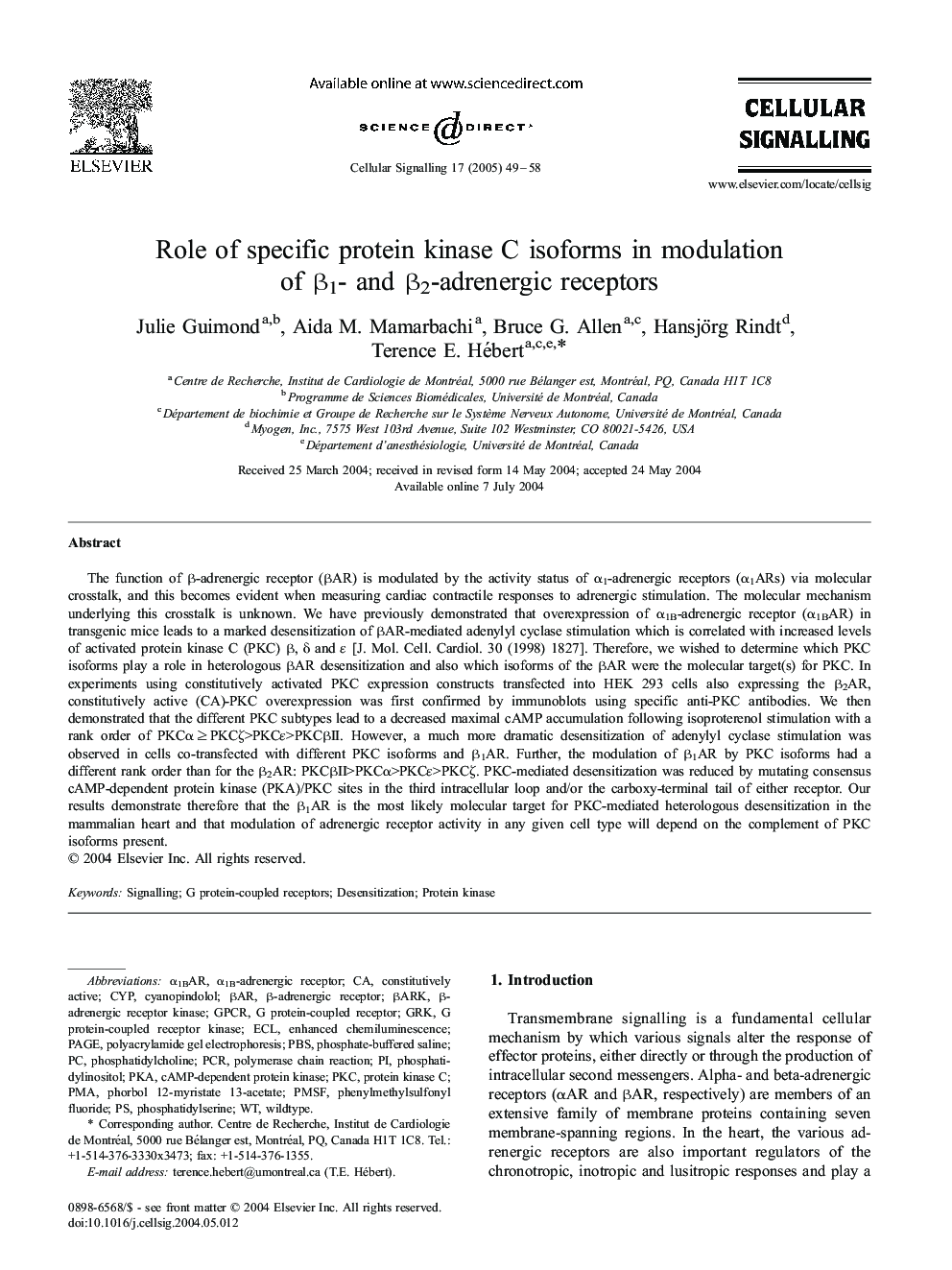| Article ID | Journal | Published Year | Pages | File Type |
|---|---|---|---|---|
| 10816547 | Cellular Signalling | 2005 | 10 Pages |
Abstract
The function of β-adrenergic receptor (βAR) is modulated by the activity status of α1-adrenergic receptors (α1ARs) via molecular crosstalk, and this becomes evident when measuring cardiac contractile responses to adrenergic stimulation. The molecular mechanism underlying this crosstalk is unknown. We have previously demonstrated that overexpression of α1B-adrenergic receptor (α1BAR) in transgenic mice leads to a marked desensitization of βAR-mediated adenylyl cyclase stimulation which is correlated with increased levels of activated protein kinase C (PKC) β, δ and ε [J. Mol. Cell. Cardiol. 30 (1998) 1827]. Therefore, we wished to determine which PKC isoforms play a role in heterologous βAR desensitization and also which isoforms of the βAR were the molecular target(s) for PKC. In experiments using constitutively activated PKC expression constructs transfected into HEK 293 cells also expressing the β2AR, constitutively active (CA)-PKC overexpression was first confirmed by immunoblots using specific anti-PKC antibodies. We then demonstrated that the different PKC subtypes lead to a decreased maximal cAMP accumulation following isoproterenol stimulation with a rank order of PKCαâ¥PKCζ>PKCε>PKCβII. However, a much more dramatic desensitization of adenylyl cyclase stimulation was observed in cells co-transfected with different PKC isoforms and β1AR. Further, the modulation of β1AR by PKC isoforms had a different rank order than for the β2AR: PKCβII>PKCα>PKCε>PKCζ. PKC-mediated desensitization was reduced by mutating consensus cAMP-dependent protein kinase (PKA)/PKC sites in the third intracellular loop and/or the carboxy-terminal tail of either receptor. Our results demonstrate therefore that the β1AR is the most likely molecular target for PKC-mediated heterologous desensitization in the mammalian heart and that modulation of adrenergic receptor activity in any given cell type will depend on the complement of PKC isoforms present.
Keywords
PKCα1B-Adrenergic receptorβ-adrenergic receptor kinaseβARKβARphorbol 12-myristate 13-acetateGRKGPCRECLpKaPAGEPBSCyPPMSFG protein-coupled receptor kinaseG protein-coupled receptorsPMApolyacrylamide gel electrophoresisenhanced chemiluminescenceconstitutively activecyanopindololSignallingphosphatidylinositolphosphatidylcholinePhosphatidylserinephenylmethylsulfonyl fluoridePhosphate-buffered salinewildtypepolymerase chain reactionPCRProtein kinaseProtein kinase CcAMP-dependent protein kinaseDesensitizationβ-Adrenergic receptorG protein-coupled receptor
Related Topics
Life Sciences
Biochemistry, Genetics and Molecular Biology
Biochemistry
Authors
Julie Guimond, Aida M. Mamarbachi, Bruce G. Allen, Hansjörg Rindt, Terence E. Hébert,
